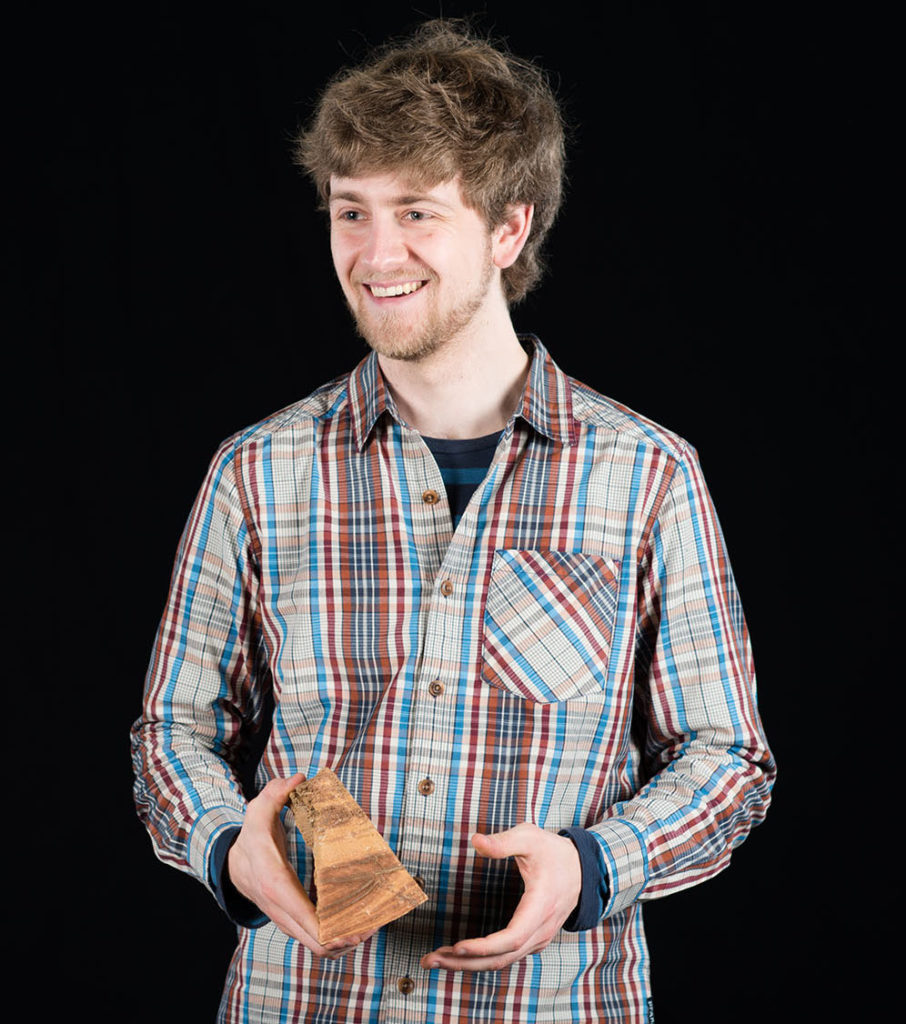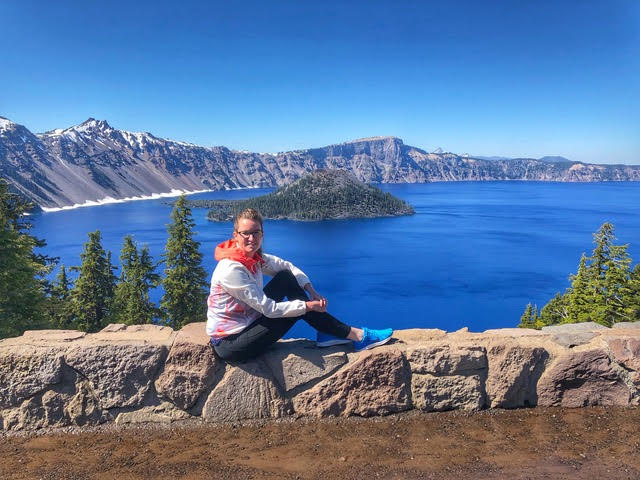Cedric Hagen, a doctoral candidate in the College of Earth, Ocean, and Atmospheric Sciences, spends a lot of time thinking about fossils. He’s not a paleontologist, though: don’t expect to find him digging up a Tyrannosaurus Rex. For one thing, dinosaurs lived much too recently–a measly 66 million years ago, in the case of the T. rex. Cedric’s work takes him much, much further back in time to the beginning of the Cambrian era, which began over 500 million years ago.

While the Cambrian era is not the beginning of life on earth (for that, you’d need to go back a staggering 3.5 billion years) the Cambrian era is important because that is the time when many of the major forms of life appeared. This includes, for example, spongelike animals, burrowing worms, creatures with carbonate shells, reef-forming animals, and arthropods like the remarkably successful trilobites. The apparent rapid increase in the diversity of life at this time is termed the Cambrian explosion.

As you may imagine, there are numerous challenges to studying life from so long ago. One of the major challenges is that there simply aren’t very many samples in existence. Part of the problem is that although the rocks at the ocean floor are old from a human standpoint, since oceanic crust is continually formed at mid-ocean ridges and destroyed at deep-sea trenches, there’s a hard limit on the age of fossils you can find at the sea floor. Oceanic crust is at most about 200 million years old throughout most of the world’s oceans. While there are a few places in the Mediterranean that date back around 340 million years, even that is a couple hundred million years too young. Only at isolated locations on the continents are there places where Cambrian carbonate rock formations exist. “You can think of these as reefs, really old reefs,” Hagen said.

Before the advent of carbon isotope and radiometric dating, geologists had to base their ordering of the fossil record on relative positioning in layers of rock and fossil co-occurrence. Sedimentary rock forms as layers of material (strata) pile up over time. So, the more strata above a fossil, the further back in time the fossil formed. If you find multiple fossils in one area, this is a reliable way to place the fossils in chronological order—that is, of course, if those layers haven’t been jumbled up by earthquakes, landslides, or tectonic folding in the meantime. An additional help is that the events that lead to fossilization, such as a mudslide, frequently result in many organisms being fossilized together. If the same species is found at two sites, it is likely that the two sites represent the same era. This lets scientists pin approximate dates on the co-occurring fossils.

Radiometric dating allows precise measurement of age based on the decay of radioactive material. As radioactive material decays, atoms of one element are transformed into another. For example, uranium decays (through a convoluted process) into lead. Measuring the relative abundance of each element allows one to calculate the age of the sample. Since these rocks are made in part from the remnants of carbon-shelled organisms, they also record the amount of particular isotopes of carbon that were present at the time that the organism died. Since the relative abundance of carbon isotopes varies slowly through time, the pattern of carbon isotope concentrations in a sample of carbonate rock is like a record of the rock’s position in time.
“We’ve pulled together these records that have different chunks of time, and we’re trying to correlate them to a single high resolution record that we know the time of so we can know the order of the fossils, ” Hagen says. “What we’ve started to find is that the uncertainty in these measurements is quite large, larger than previously anticipated—there’s a lot of different places and times where things could have evolved.”
Prior to this research, scientists lined up carbon isotope chronologies visually. Hagen has been working on numerical algorithm that allows a computer to identify possible matches between rock samples from different parts of the world. “We’re cataloging libraries of possibilities,” says Hagen. “Are there twenty [possible arrangements]? Are there two? What could we do as geologists to go into the field and pick one or two of those and narrow down this uncertainty?”
To hear more about Cedric’s research, tune in on Sunday,May 15th at 7 PM on KBVR 88.7 FM. You can live stream the show, or, if you miss it, you can download this episode and most of our earlier shows as podcasts on iTunes.




























